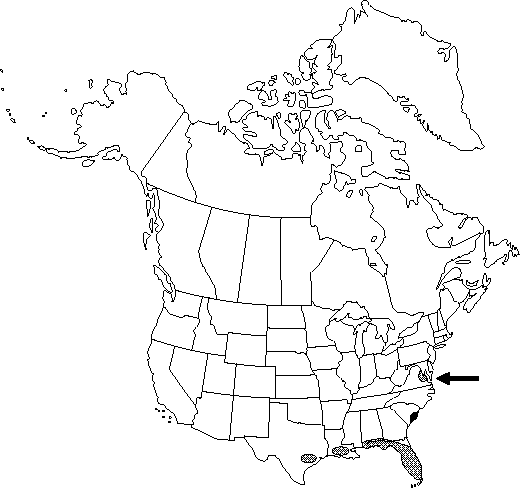Difference between revisions of "Boehmeria nivea"
Voy. Uranie 12: 499. 1830.
FNA>Volume Importer |
FNA>Volume Importer |
||
| Line 27: | Line 27: | ||
}}<!-- | }}<!-- | ||
| − | --><span class="statement" id="st- | + | --><span class="statement" id="st-undefined" data-properties=""><b>Shrubs </b>or subshrubs, 2(-3) m. <b>Leaves</b> alternate. <b>Leaf</b> blades broadly ovate to nearly orbiculate, 8-15 × 5-12 cm, abaxial surface densely white-tomentose, adaxial surface slightly scabrous. <b>Inflorescences</b> panicles of moniliform (beaded) clusters, branches not leafy at apex; staminate flowers in proximal leaf axils, pistillate flowers in distil axils. <b>Achenes</b> compressed or lenticular, ovoid or ellipsoid, ca. 1.5 × ca. 0.9 mm, pubescent with straight or slightly curved hairs, uniformly smooth; seeds not conspicuous in outline, corky tissue absent.</span><!-- |
-->{{Treatment/Body | -->{{Treatment/Body | ||
| Line 33: | Line 33: | ||
|habitat=Roadsides, waste places, vacant lots, cultivated fields, along Atlantic and Gulf coastal plains | |habitat=Roadsides, waste places, vacant lots, cultivated fields, along Atlantic and Gulf coastal plains | ||
|elevation=0-200 m | |elevation=0-200 m | ||
| − | |distribution=Ala.;Fla.;Ga.;La.;S.C.;Tex.;Va.;Central America;Asia | + | |distribution=Ala.;Fla.;Ga.;La.;S.C.;Tex.;Va.;Central America;Asia. |
|discussion=<p>Boehmeria nivea, ramie, is an important source of fiber in Asia and was introduced into the United States in 1855 as a commercial crop. The fibers are exceptionally strong but difficult to extract.</p> | |discussion=<p>Boehmeria nivea, ramie, is an important source of fiber in Asia and was introduced into the United States in 1855 as a commercial crop. The fibers are exceptionally strong but difficult to extract.</p> | ||
|tables= | |tables= | ||
| Line 53: | Line 53: | ||
|habitat=Roadsides, waste places, vacant lots, cultivated fields, along Atlantic and Gulf coastal plains | |habitat=Roadsides, waste places, vacant lots, cultivated fields, along Atlantic and Gulf coastal plains | ||
|elevation=0-200 m | |elevation=0-200 m | ||
| − | |distribution=Ala.;Fla.;Ga.;La.;S.C.;Tex.;Va.;Central America;Asia | + | |distribution=Ala.;Fla.;Ga.;La.;S.C.;Tex.;Va.;Central America;Asia. |
|introduced=true | |introduced=true | ||
|reference=None | |reference=None | ||
| Line 59: | Line 59: | ||
|publication year=1830 | |publication year=1830 | ||
|special status=Introduced | |special status=Introduced | ||
| − | |source xml=https://jpend@bitbucket.org/aafc-mbb/fna- | + | |source xml=https://jpend@bitbucket.org/aafc-mbb/fna-data-curation.git/src/9216fc802291cd3df363fd52122300479582ede7/coarse_grained_fna_xml/V3/V3_453.xml |
|genus=Boehmeria | |genus=Boehmeria | ||
|species=Boehmeria nivea | |species=Boehmeria nivea | ||
| − | |||
| − | |||
| − | |||
| − | |||
| − | |||
| − | |||
| − | |||
| − | |||
| − | |||
| − | |||
| − | |||
| − | |||
| − | |||
| − | |||
| − | |||
| − | |||
| − | |||
| − | |||
| − | |||
| − | |||
| − | |||
}}<!-- | }}<!-- | ||
-->[[Category:Treatment]][[Category:Boehmeria]] | -->[[Category:Treatment]][[Category:Boehmeria]] | ||
Revision as of 13:41, 27 July 2019
Shrubs or subshrubs, 2(-3) m. Leaves alternate. Leaf blades broadly ovate to nearly orbiculate, 8-15 × 5-12 cm, abaxial surface densely white-tomentose, adaxial surface slightly scabrous. Inflorescences panicles of moniliform (beaded) clusters, branches not leafy at apex; staminate flowers in proximal leaf axils, pistillate flowers in distil axils. Achenes compressed or lenticular, ovoid or ellipsoid, ca. 1.5 × ca. 0.9 mm, pubescent with straight or slightly curved hairs, uniformly smooth; seeds not conspicuous in outline, corky tissue absent.
Phenology: Flowering late summer–fall.
Habitat: Roadsides, waste places, vacant lots, cultivated fields, along Atlantic and Gulf coastal plains
Elevation: 0-200 m
Distribution

Ala., Fla., Ga., La., S.C., Tex., Va., Central America, Asia.
Discussion
Boehmeria nivea, ramie, is an important source of fiber in Asia and was introduced into the United States in 1855 as a commercial crop. The fibers are exceptionally strong but difficult to extract.
Selected References
None.